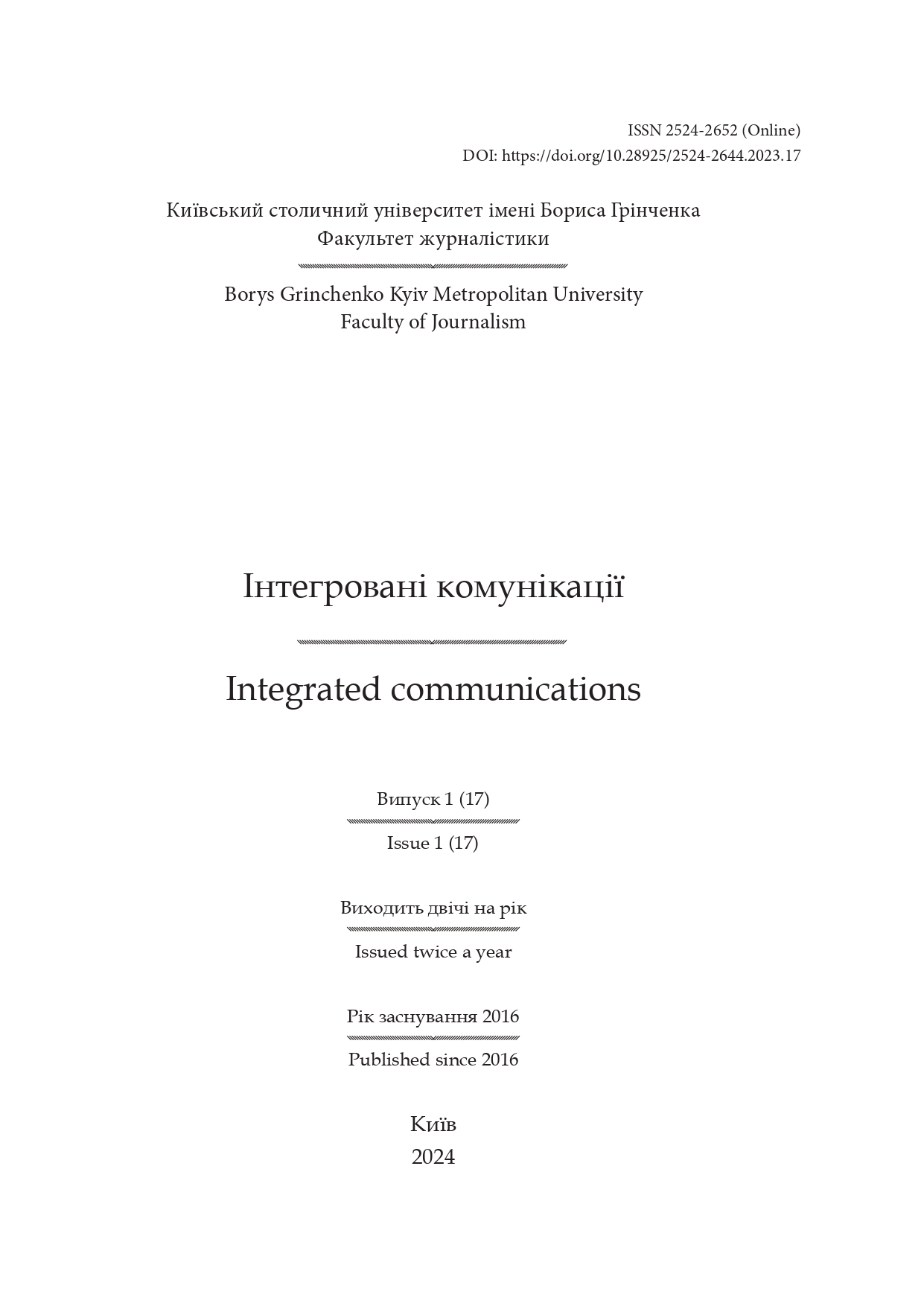COMMUNICATION FUNCTIONALITY OF TELEGRAM CHANNELS FOR ORGANIZING EDUCATIONAL EVENTS
Abstract
The article is dedicated to researching the communication functionality of telegram channels, which should be used for organizing educational events. Attention is focused on the advantages of the cloud messenger and its threats, which are intensified against the background of PSYOP. The purpose of the study is to determine the technical aspects of the functioning of telegram channels and outline the principles of their content in organizing educational events. The analytical- synthetic method was used to determine the state of scientific treatment of the problem and outline the nature of the main terms. The method of synthesis and generalization optimized the theoretical presentation. The method of observation and analysis of information products was used to evaluate the content of the educational Telegram channel. The communication functionality of the Telegram channel is differentiated into two types: basic and additional. The tools that can be used when filling your Telegram channel, particularly on educational topics, are detailed within each. The following functionality of the messenger is detailed: basic (communication in Telegram chats; sending text, voice and video notifications; synchronization of content); additional (creating chatbots, closed or open groups and channels; blocking; automatic account deletion; registration of several accounts in Telegram; scheduled sending of messages; silent sending of messages; self-destruction of content; sorting of notifications by folders; search for videos and GIF files; pinning notifications at the top of the chat; disabling messages from the annoying subscriber; using hashtags). Telegram is a cross-platform cloud messenger with powerful, unique communication and information potential. It has quickly evolved from a platform for communication to a multiservice platform, where numerous resources are concentrated that allow the user to organize educational events and consume and produce information.
Downloads
References
After the start of the war, Ukrainians began to spend eight times more time on Telegram. Avaiable at: http://surl.li/gymve (accessed 12.03.2024).
Balashova, L. (2021). TikTok grew by 500%, Facebook’s results are more modest. The Ukrainian audience of social networks has increased by 7 million people – GlobalLogic research. Avaiable at: https://bit.ly/3WmKb7v (accessed 12.03.2024).
Bogatu, S. I. (2021). Possibilities of using the Telegram social network in educational activities during distance learning. Avaiable at: https://bit.ly/3WmKb7v (accessed 12.04.2024).
Butyrina, M. V. (2020). Telegram channel as a meta-media: communication features. Social communications: strategic interaction and mutual influence: materials of the All- Ukrainian scientific and practical conference. Zaporizhzhia, pp. 54–59.
How hashtags work in different social networks. Avaiable at: https://bit.ly/3I2OaSf (accessed 12.03.2024).
Ilyuk, K., Sapolovych, E., Ryaboshtan, I. (2022). «Now we will live to the fullest!». How and why Russia has created a Telegram channels network for the occupied territories of Ukraine. Avaiable at: https://bit.ly/3VmpwiD (accessed 04.04.2024).
Korenkov, O. (2017). Telegram as a new media platform for the Islamic State. Bulletin of Lviv University, 26, pp.120–131.
Matvienko, Yu. (2023). The use of immersive technologies in modern conditions of the organization of the educational process. The 5th International scientific and practical conference «Prospects of modern science and education», Sweden, February 07-10, pp. 419–422.
Nikitenko, E. V. & Ometsynska, N. V. (2021). Search system for media content in the Telegram messenger. Mathematical machines and systems, 1, pp. 42–51.
Pavlovsky, A. (2020). Being prompt and close to the audience is one of the components of a successful Telegram channel. Avaiable at: https://bit.ly/3Ws3FaM (accessed 04.20.2024).
Petrova, I. (2019). Event management: educational trends. Avaiable at: http://surl.li/tiyai (accessed 15.03.2024).
Saliy, S. (2021). About the importance of structuring information in the Telegram channel. Avaiable at: https://bit.ly/3GmdXE1 (accessed 04.12.2024).
Strategy for the development of higher education in Ukraine for 2022-2032. Avaiable at: http://surl.li/ekgsf (accessed 12.03.2024).
Vodolazska, T. V. & Ustymenko, T. A. (2023). WOW-effect in adult education: from the practice of educational events. The image of a modern teacher, 6 (213), pp. 31–36.
Yakub, I. (2020). What are hashtags and reposts? How exactly do they work in social networks? Avaiable at: https://bit.ly/3YSqbv6 (accessed 04.04.2024).




